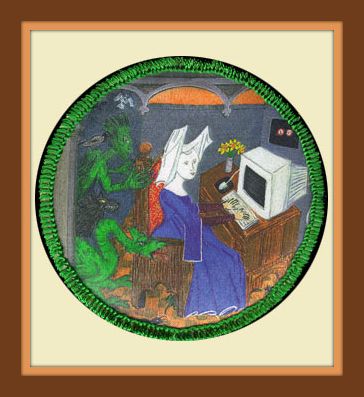This is a fascinating book by three developmental psychologists who have spent their professional life studying how infants and children learn. In it, they succinctly summarize a vast body of research for a general audience. And wow! The kind of research they describe is fascinating, and the best part of this book. It's all about experiments. Bring the kids into the lab, video tape them, and then analyze their eye movements or the way they are sucking their pacifier, and you get a little view into their minds. For example, researchers have found that an infant recognizes that something is wrong when an object on wheels disappear behind a screen, but does not emerge on the other side of the screen at the proper time, given its entry speed. However, if the object were to be a duck coming in, and then a dog going out, the same child wouldn't bat an eye. The recognition that something funky is going on there doesn't develop until later.
The best chapter is on language aquisition. My favorite developmental stage with my kids is when they start speaking. And when they go through the period of fast mapping where there are learning words so quickly and easily. This chapter sheds light on the process. An interesting tidbit: when babies are born, they are able to hear all the differences in languages across the world. The authors describe them as global citizens. For example, a Japanese baby can easily distinguish between the "r" and "l" sound that older Japanese cannot hear. By the time the baby is 9 months old, though, the ways they perceive sounds have changed, and they have started to narrow their focus to the sounds of the language they have been exposed to.
In all the research they summarize, they provide three main explanations for all of children's learning. 1. Babies come knowing an awful lot. They are pre-wired for certain things. It's in their DNA. 2. Babies experiment and learn just the way scientists do. They do certain things over and over and gather evidence, and are able to come to conclusions about the world that way. (Thus, the title for the book.) 3. Parents and other adults are uniquely suited to teach children (unconsciously) certain things that shape that perspectives of the world.
An example of the third: all people who talk to babies utilize a certain unique way of speaking. It's more distinctive, a higher pitch, and it enables babies to become accustomed to language and speech.
I read this for the first time when MJ was born and decided to pull it out again since we have another baby in the house. I wish they would publish a Home Experimetal Handbook for Parents. It would chronicle by age easy experiments you could perform on your child at home and then summarize the things that you would learn about child development from doing the experiment.


3 comments:
One thing I wanted to note that I forgot to say earlier. At the end of the book, the authors talk about how because infant and childrens' brains are developing, they really see the world differently. They give some amazing statistic about how much is going on in their brains--something like 3 times the activity that an adult's brain has.
It has helped me be a little more patient with my kids when they want to pick up rocks and color on the walls, etc. It reminded me that they are exploring and experimenting on their world
interesting. i'll have to add this to the "to-read"s. maybe G would like it. She reads lay books about neuroscience.
"It would chronicle by age easy experiments you could perform on your child at home"
No way that book passes the IRB! ;)
Post a Comment